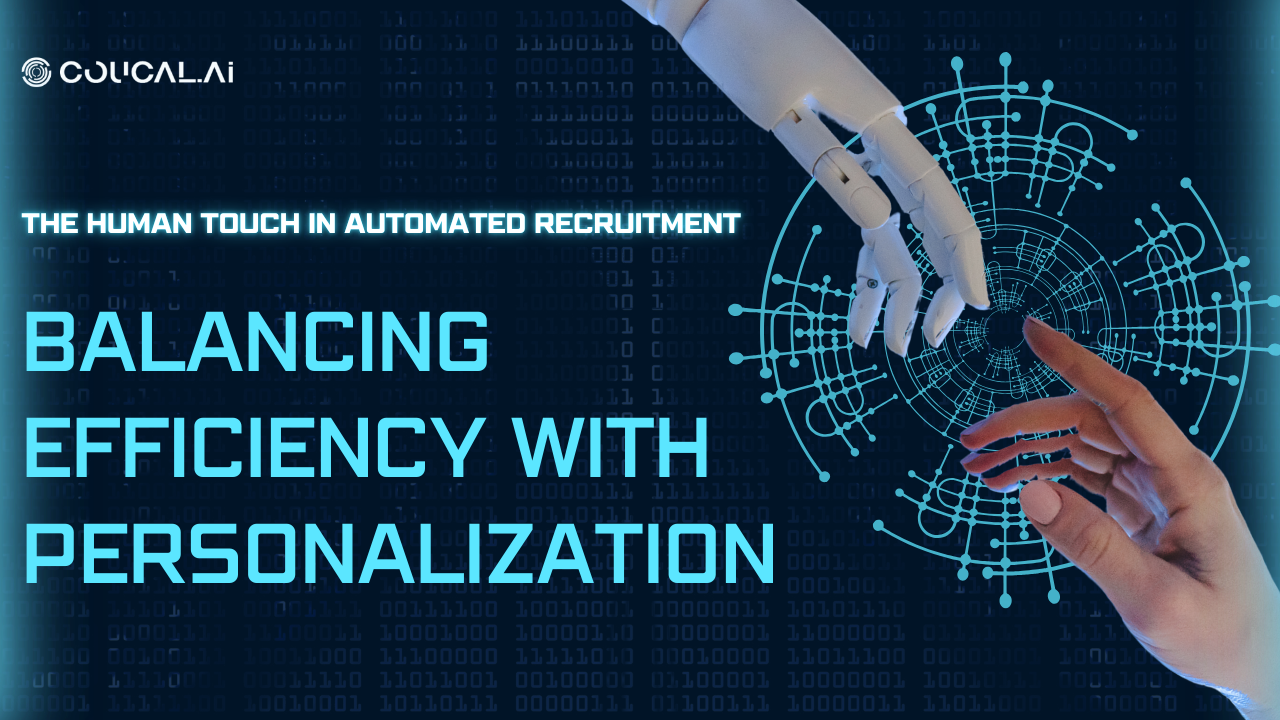
The Human Touch in Automated Recruitment: Balancing Efficiency with Personalization
In the evolving world of recruitment, automation is transforming the way companies hire talent. Automated recruitment systems are becoming increasingly popular, offering speed and efficiency that manual processes simply can't match. However, with all the technological advancements, there’s one element that should never be overlooked: the human touch.
1. What is Automated Recruitment?
Automated recruitment leverages technology to streamline various stages of the hiring process. From resume screening to interview scheduling, AI-powered tools handle repetitive tasks, allowing HR professionals to focus on more strategic decisions. These systems can analyze vast amounts of data, predict candidate success rates, and even conduct initial interviews through chatbots.
2. The Benefits of Automation
- Efficiency: Automated systems can process hundreds of applications in a fraction of the time it would take a human recruiter. This allows companies to fill roles faster, reducing the time-to-hire and increasing overall productivity.
- Cost Savings: By automating repetitive tasks, companies save on operational costs associated with recruitment. Fewer resources are needed, and recruiters can focus on high-value tasks.
- Consistency: Automation reduces the risk of human error and bias. It ensures that every applicant is treated equally based on predefined criteria, which promotes fairness in the recruitment process.
3. The Risks of Losing Personalization
While automation brings many advantages, over-reliance on it can lead to a loss of personalization, which is crucial in recruitment. Here’s why:
- Building Relationships: Recruitment is not just about filling positions; it's about building relationships with potential employees. Automated emails and generic responses can leave candidates feeling disconnected and undervalued
- Understanding Nuances: A candidate’s resume may not fully capture their potential. Human recruiters have the ability to interpret nuances, such as soft skills, personality, and culture fit, which AI systems may overlook.
- Maintaining Engagement: Personalized communication makes candidates feel valued and engaged throughout the hiring process. Without human interaction, candidates may lose interest, leading to increased dropout rates.
4. Balancing Automation with the Human Touch
To create a recruitment process that is both efficient and personalized, companies must strike the right balance between automation and human involvement.
- Focus on Candidate Experience: Make sure that candidates feel heard throughout the recruitment process. Incorporate feedback mechanisms and provide opportunities for human interaction, such as live interviews or virtual meet-and-greets.
- Personalize Candidate Communication: While automated responses are great for efficiency, recruiters should personalize follow-ups, especially for top candidates. A simple phone call or tailored email can make all the difference.
- Use AI for Screening Calls and Assessments: Let AI handle resume screening and initial candidate assessments, but involve human recruiters for final decisions. This ensures that qualified candidates aren't overlooked.
5. Conclusion
Automation is revolutionizing recruitment by improving efficiency and reducing costs. However, the human touch remains indispensable in creating meaningful relationships with candidates, understanding their unique strengths, and ensuring a positive candidate experience. By balancing automation with personalization, companies can optimize their recruitment strategies for long-term success.
This balance of technology and human intuition ensures that recruitment remains not only efficient but also empathetic—ensuring the right talent finds the right roles.
